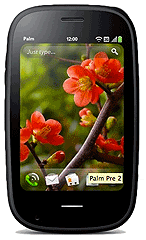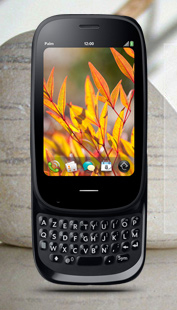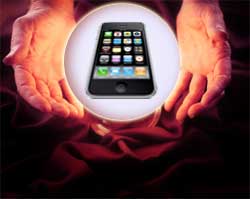The arrival of Google’s Nexus One smartphone is like the Beatles following Elvis Presley. Elvis revolutionized music and retained his immortal status, but The Beatles were great in their own right. The technological advantage that Apple had when it introduced the iPhone is diminishing (think Fat Elvis). And so the next iPhone will need to be another game changer for Apple to remain on top.
With the original iPhone, Apple addressed the shortcomings that most devices in the category had with fresh, innovative ideas. Initially, there were many second rate imitators, but now, products including the Palm Pre and Nexus One match if not surpass the iPhone in numerous ways.
I love my iPhone, and couldn’t imagine life without my apps. However, there are great alternatives for people who have not yet upgraded to a smartphone or want to save on their monthly service fees.
Case in point: A few months back, a friend and I were sitting in an East Village bar waiting for a bossa nova show to begin. We both whipped out our phones (his was a Pre) and had the proverbial “size contest.” I couldn’t knock the Pre, and he is very happy with it.
Moreover, AT&T’s decision to carry five Android phones is prescient–Android has no place to go but up. While it’s still not fully mature, Android is a great operating system for device manufacturers that do not have their own OS, and that is somewhat reminiscent of the early days of Microsoft Windows.
What is Apple to do? It will do very well due to the strength of its brand, and dedicated users like myself, but those strengths will eventually decline into inertia. Even a phone that leaves the Pre and Nexus One in its dust will not be good enough–Apple must bring back the “wow” factor in order to maintain its leadership of the market (or cede and focus on another groundbreaking product).
I’m confident that Cupertino has enough tricks up its sleeve that it could leave the rest of the industry chasing the iPhone again. There is room to play as the smartphone category grows, but anything less than a revolutionary product simply isn’t good enough for Apple.
 I don’t claim to have an unerring gut when it comes to judging new technology products. But stuff that knocks my socks off does tend to go on to do reasonably well. One notable exception, however, has been the Palm Pre–I continue to think that it’s one of the best phones on the market (thanks mainly to its WebOS software), but I can’t imagine that anyone involved with it, from Palm/HP to wireless carriers, is pleased with how it’s sold so far.
I don’t claim to have an unerring gut when it comes to judging new technology products. But stuff that knocks my socks off does tend to go on to do reasonably well. One notable exception, however, has been the Palm Pre–I continue to think that it’s one of the best phones on the market (thanks mainly to its WebOS software), but I can’t imagine that anyone involved with it, from Palm/HP to wireless carriers, is pleased with how it’s sold so far.
 D’oh. SFR, a wireless carrier in France, briefly posted a product page for the Palm Pre 2. The
D’oh. SFR, a wireless carrier in France, briefly posted a product page for the Palm Pre 2. The  From time to time, I’ve called Palm’s Pre the Most Interesting Smartphone That Isn’t the iPhone. It’s now been almost nine months since the Pre debuted on Sprint, and a bunch of other formidable handsets have since appeared, such as the
From time to time, I’ve called Palm’s Pre the Most Interesting Smartphone That Isn’t the iPhone. It’s now been almost nine months since the Pre debuted on Sprint, and a bunch of other formidable handsets have since appeared, such as the 
 Apple’s iPhone continues it’s march toward market dominance, a
Apple’s iPhone continues it’s march toward market dominance, a